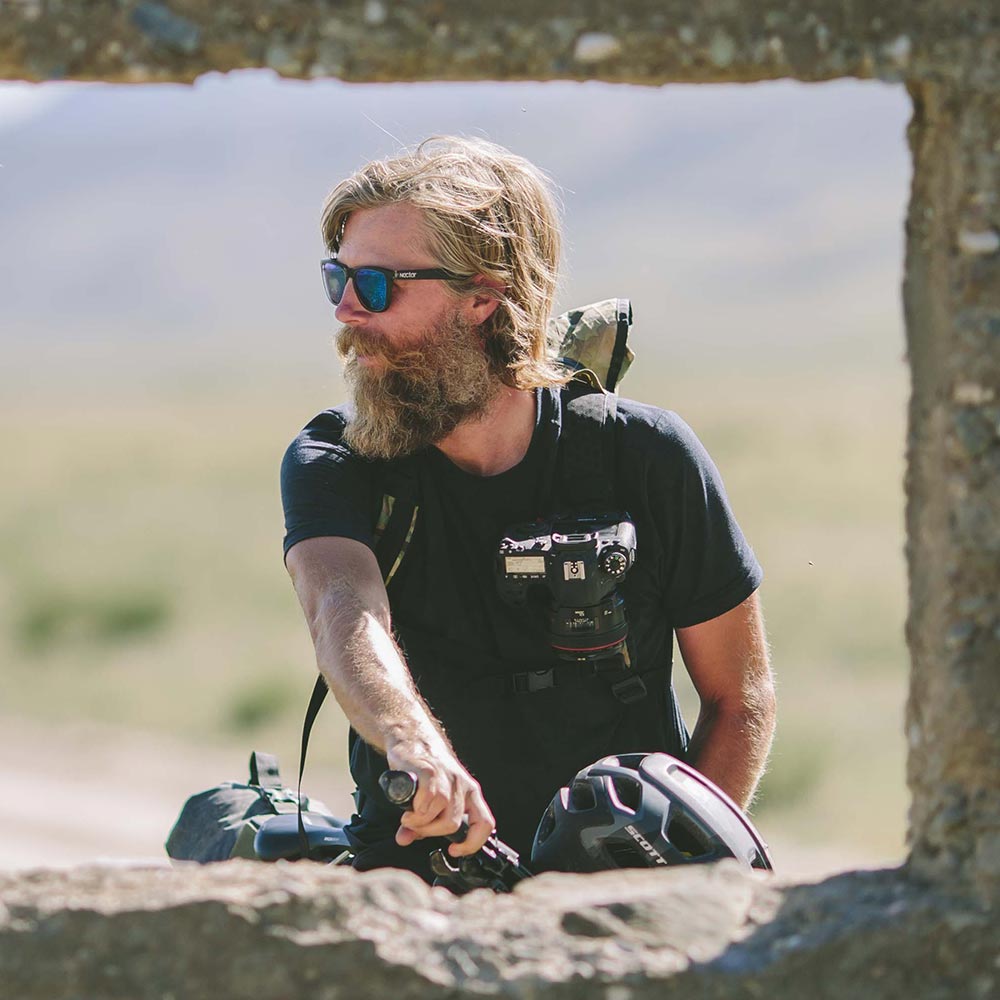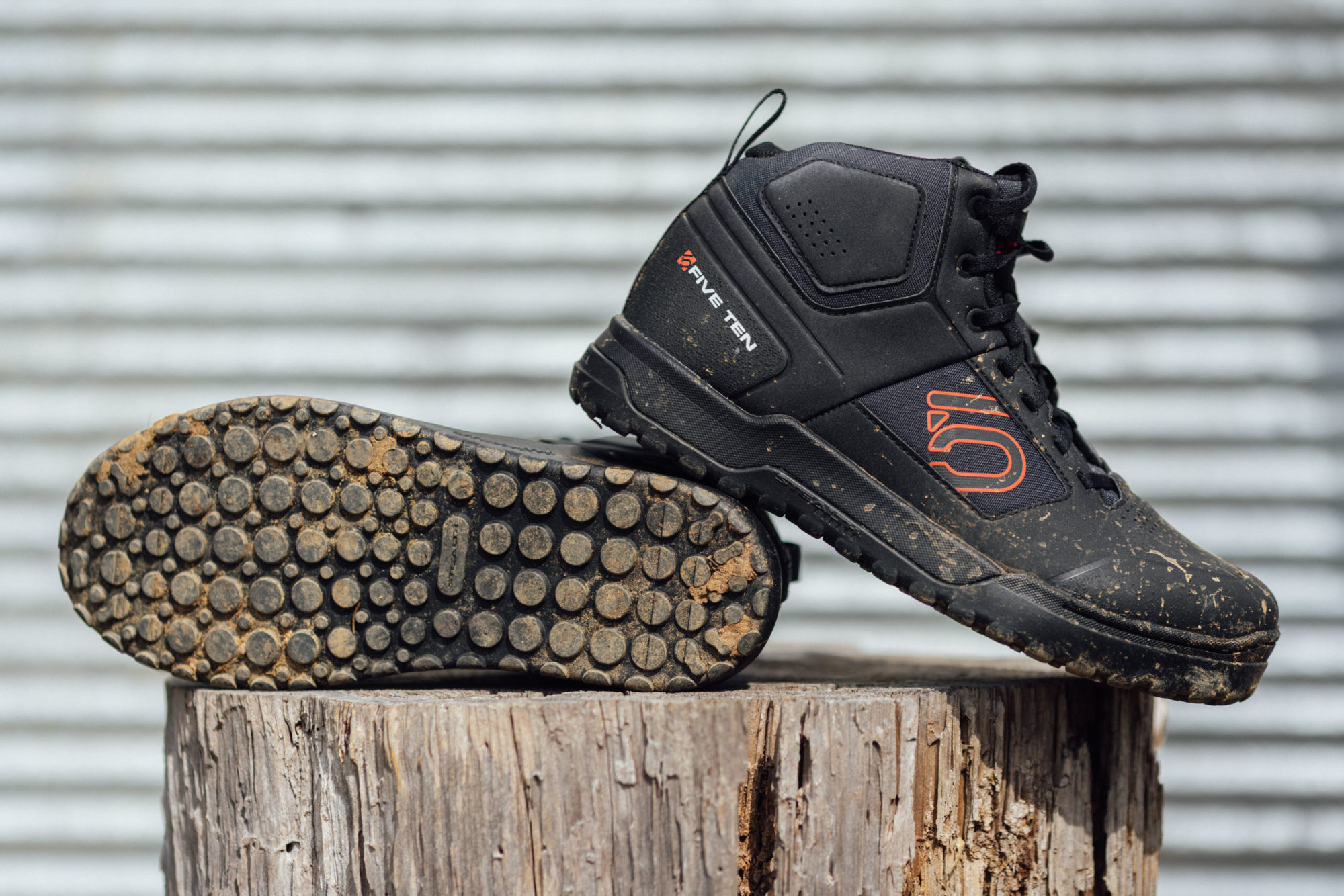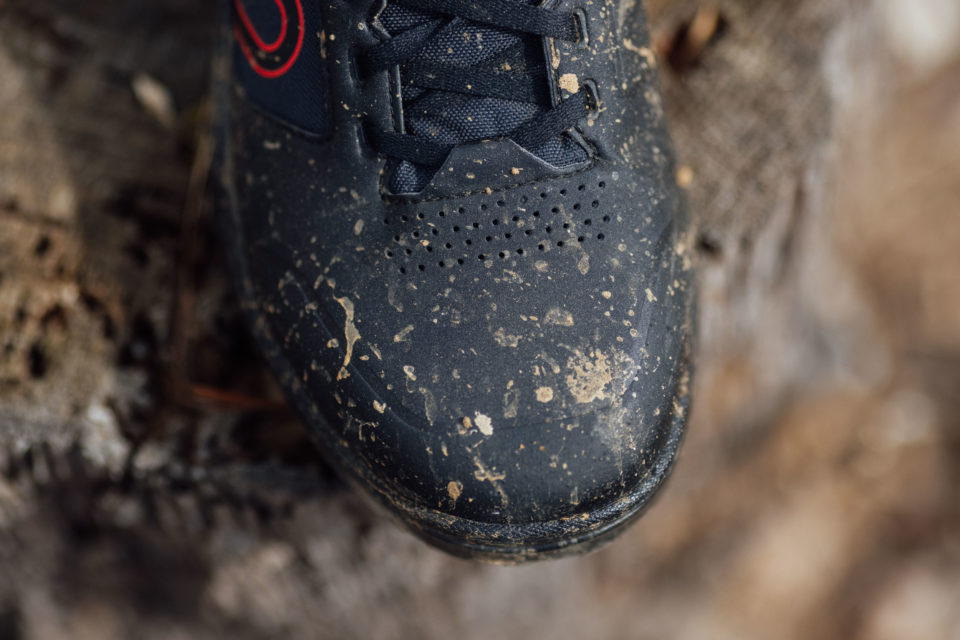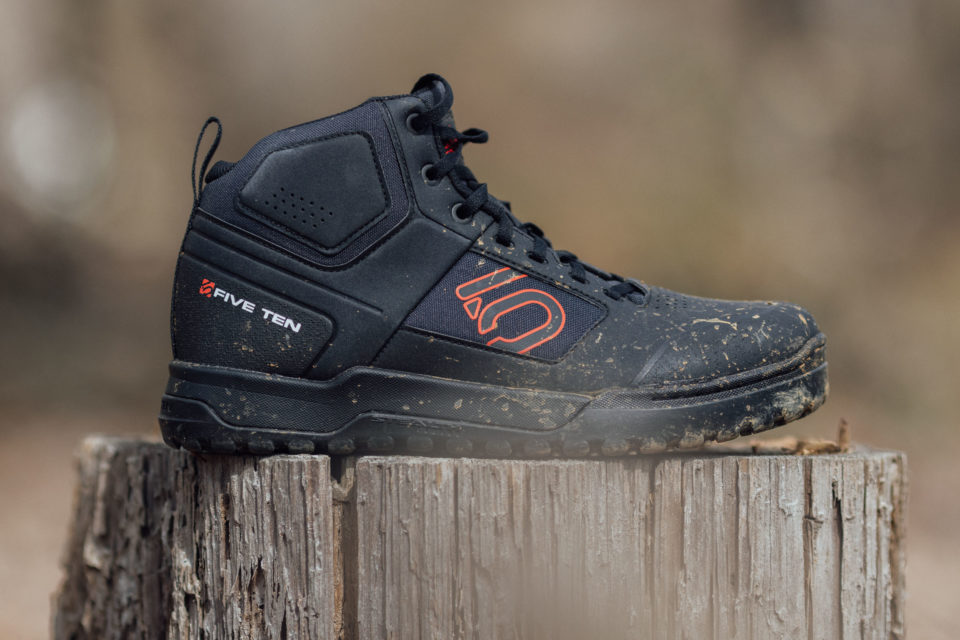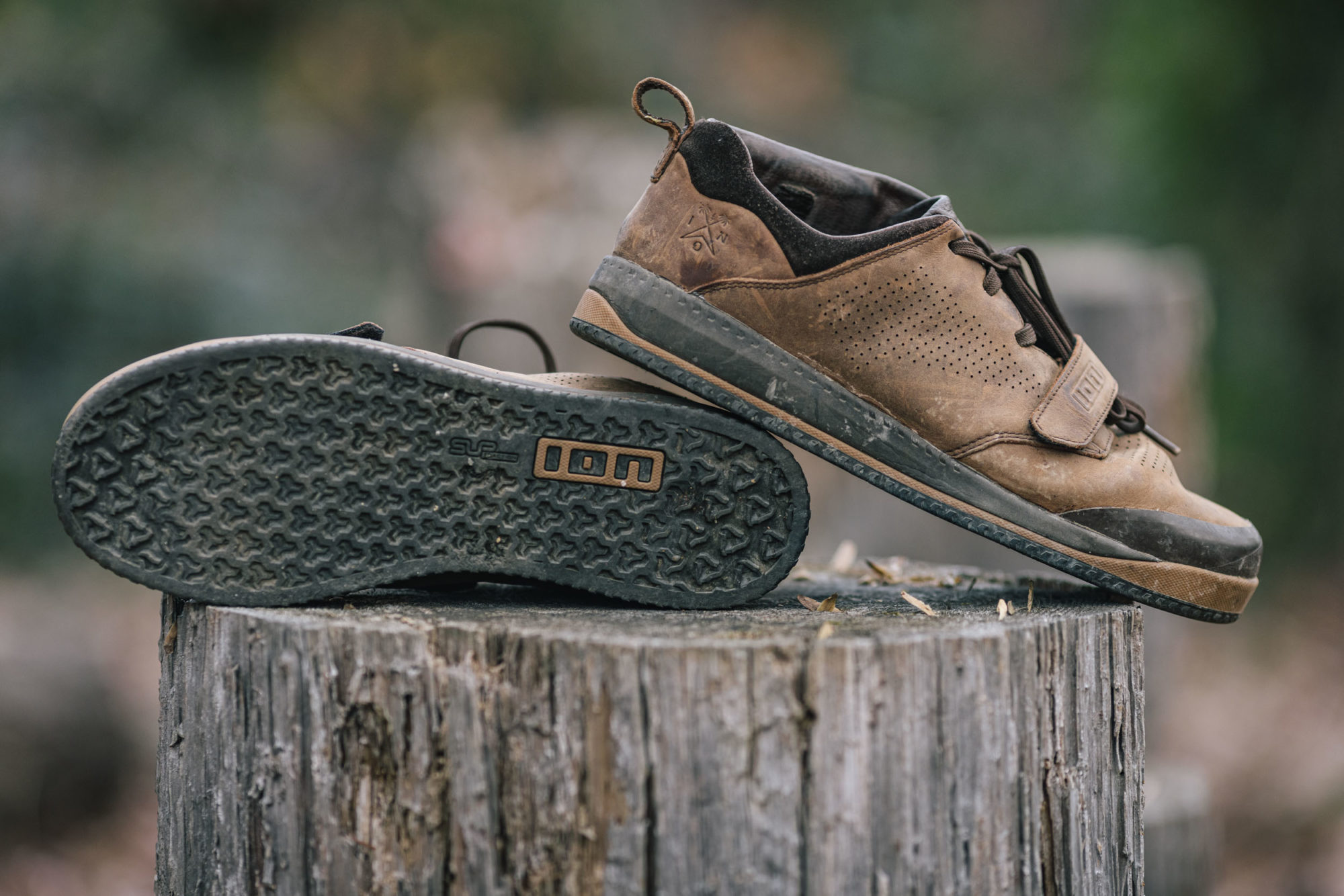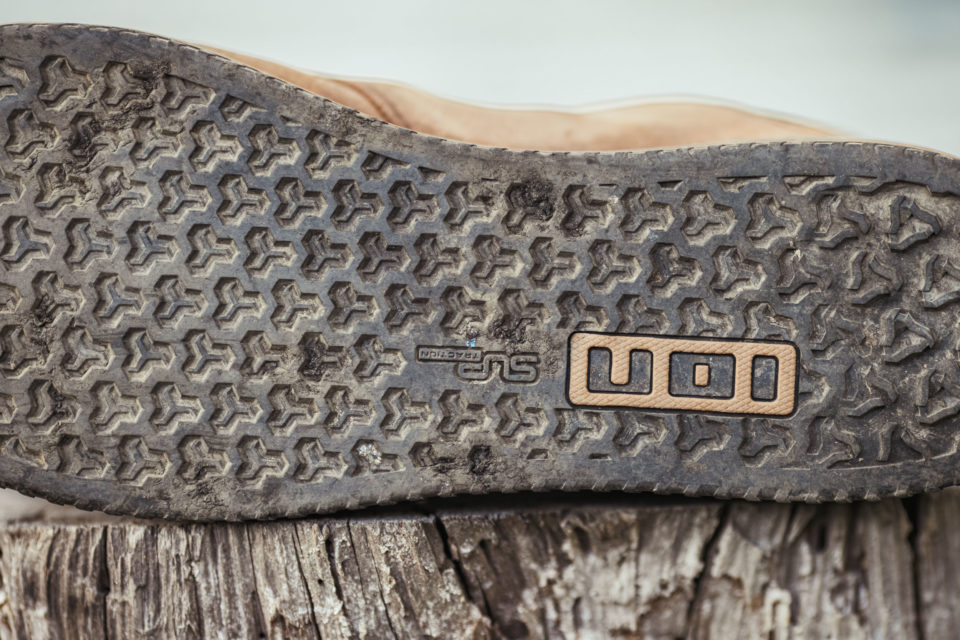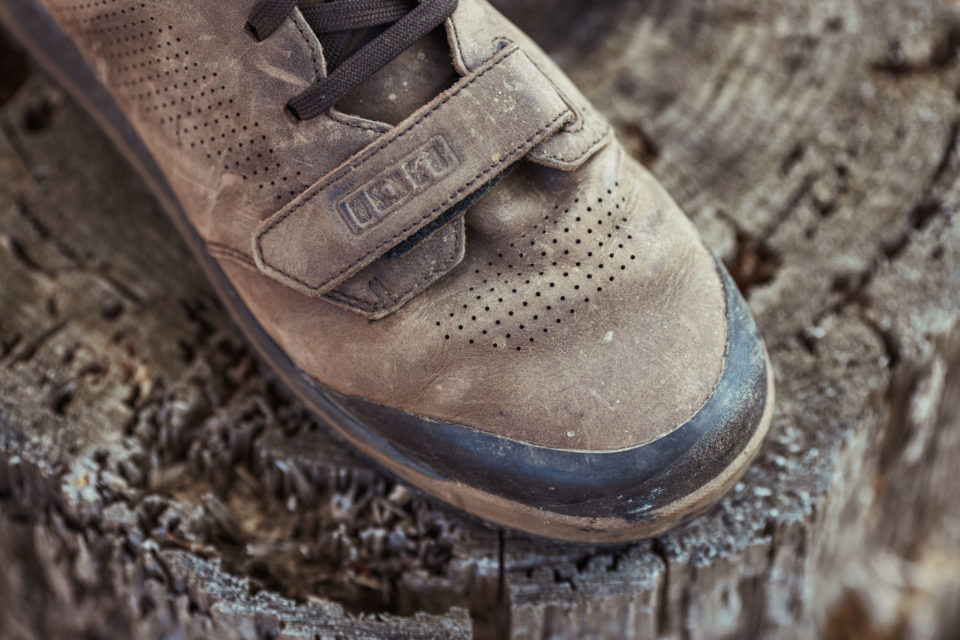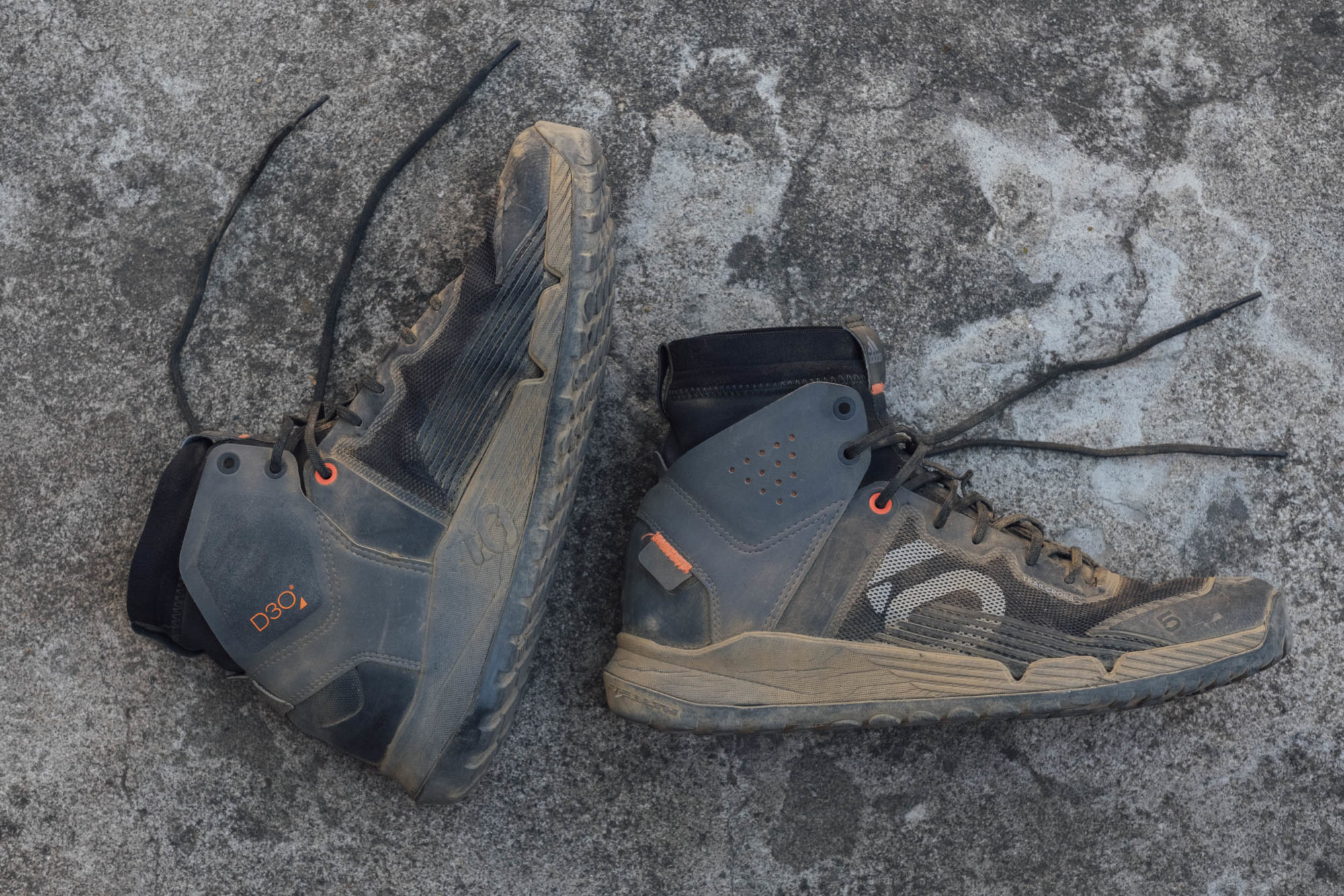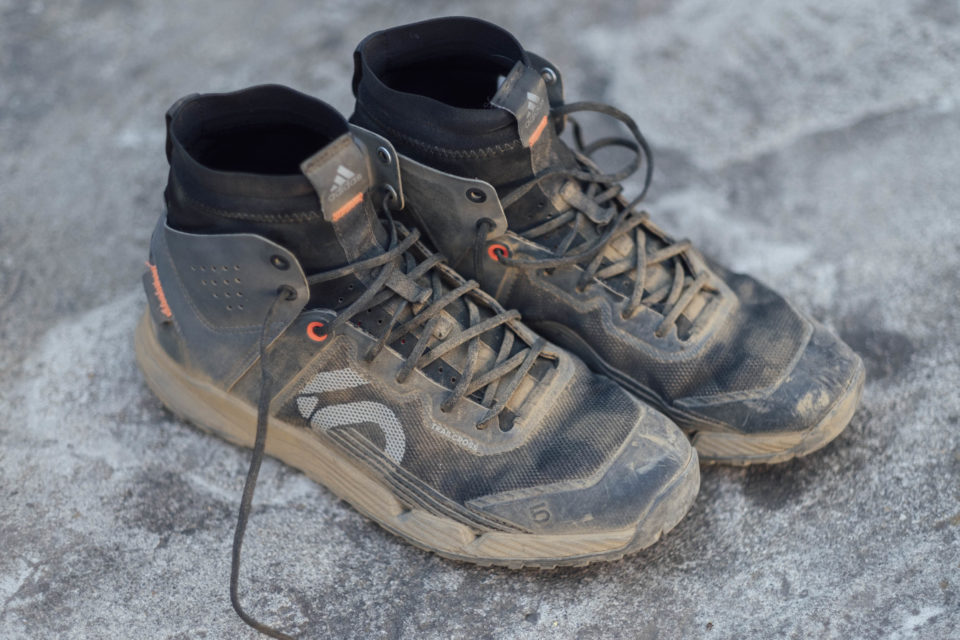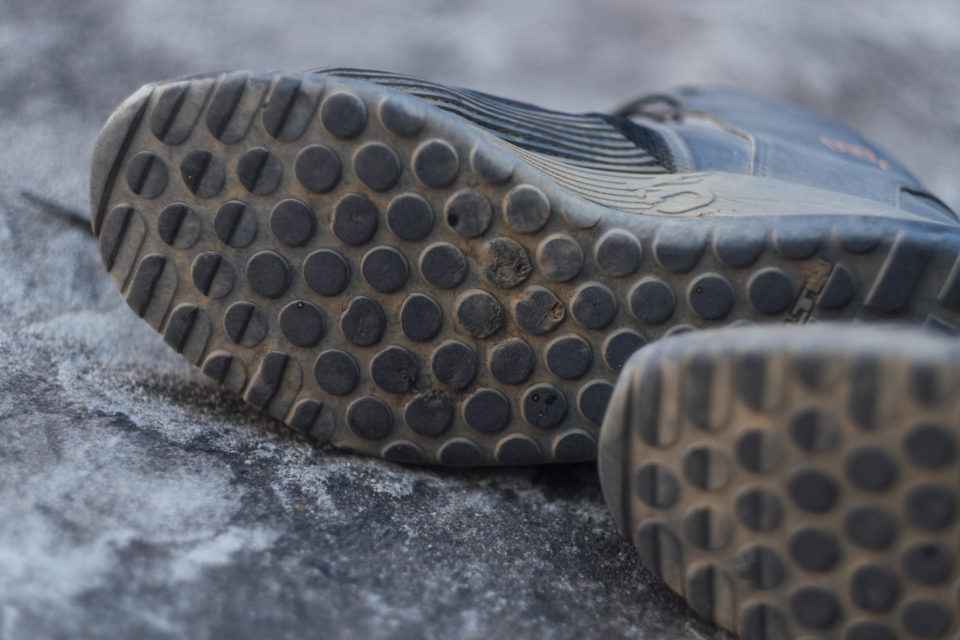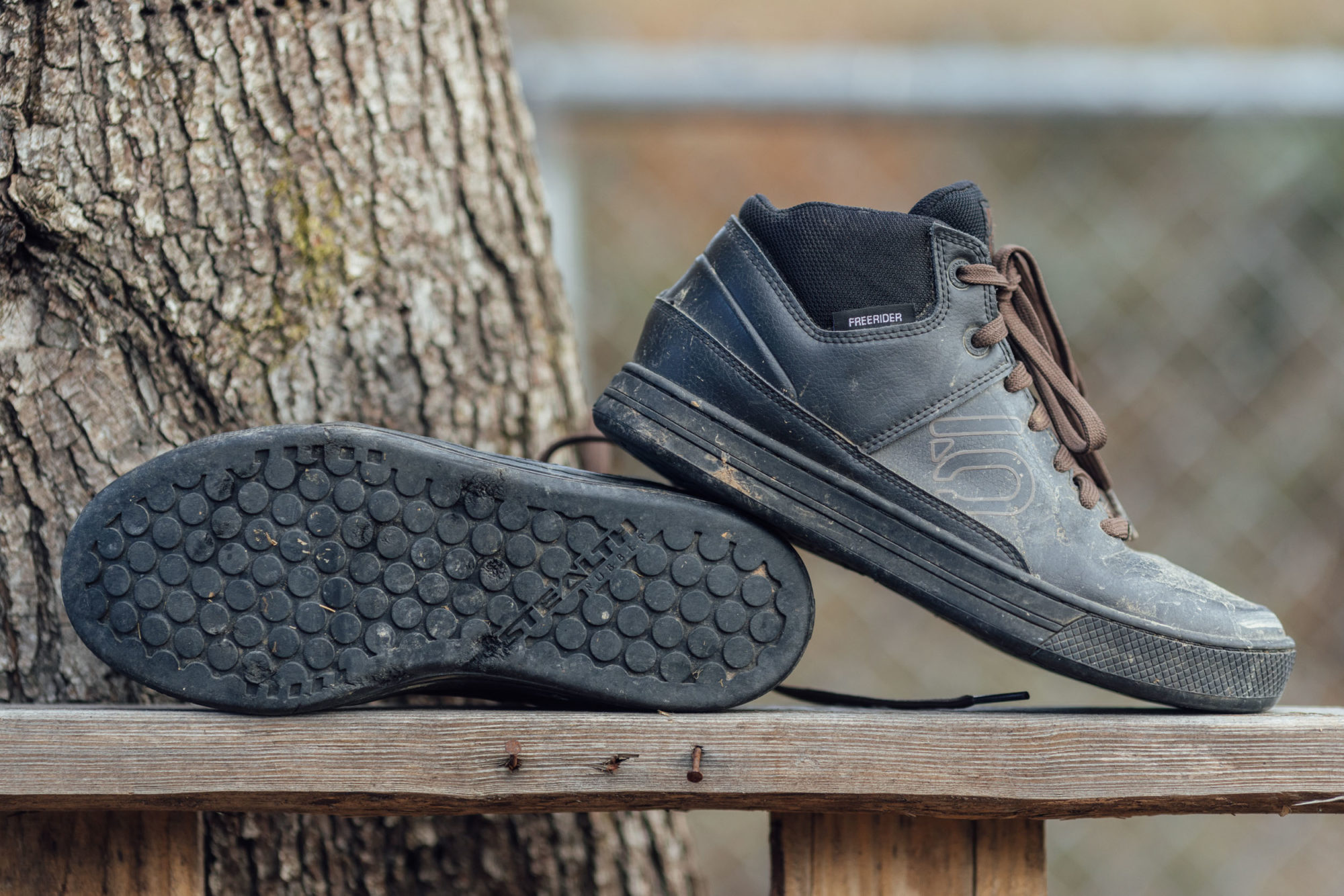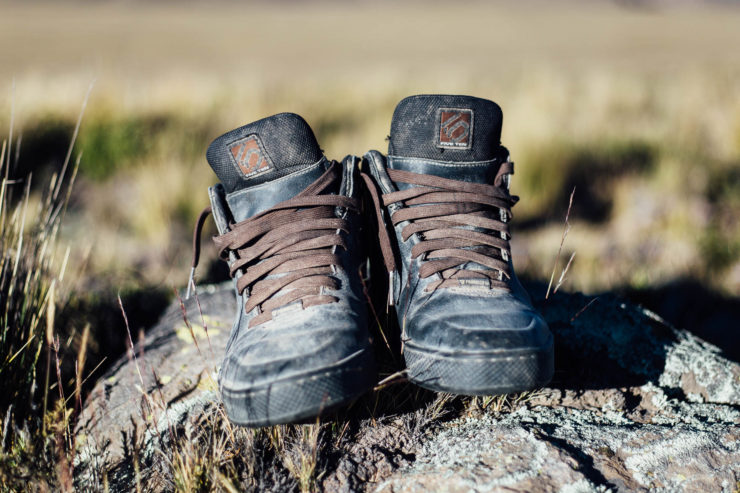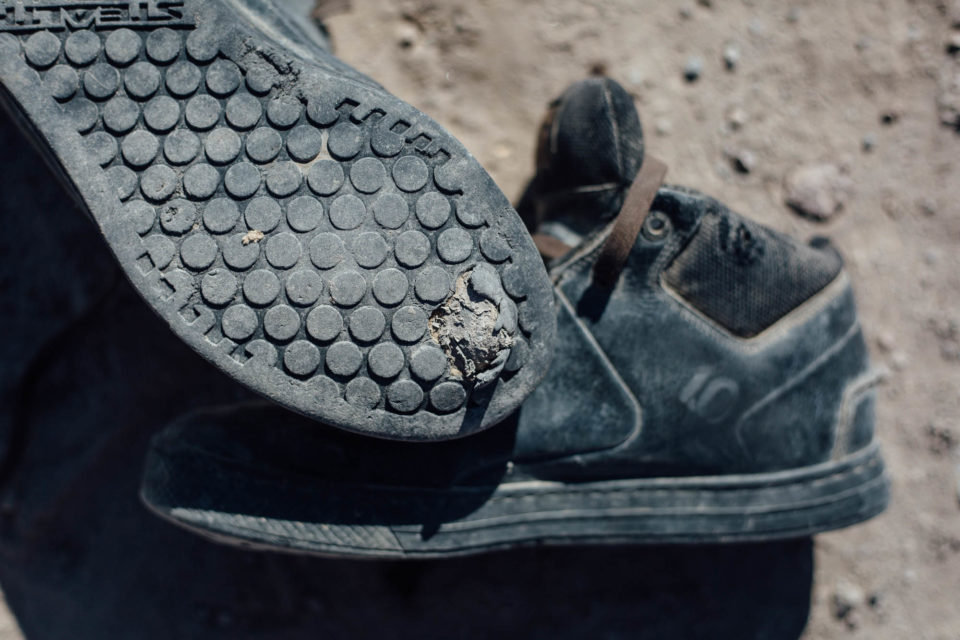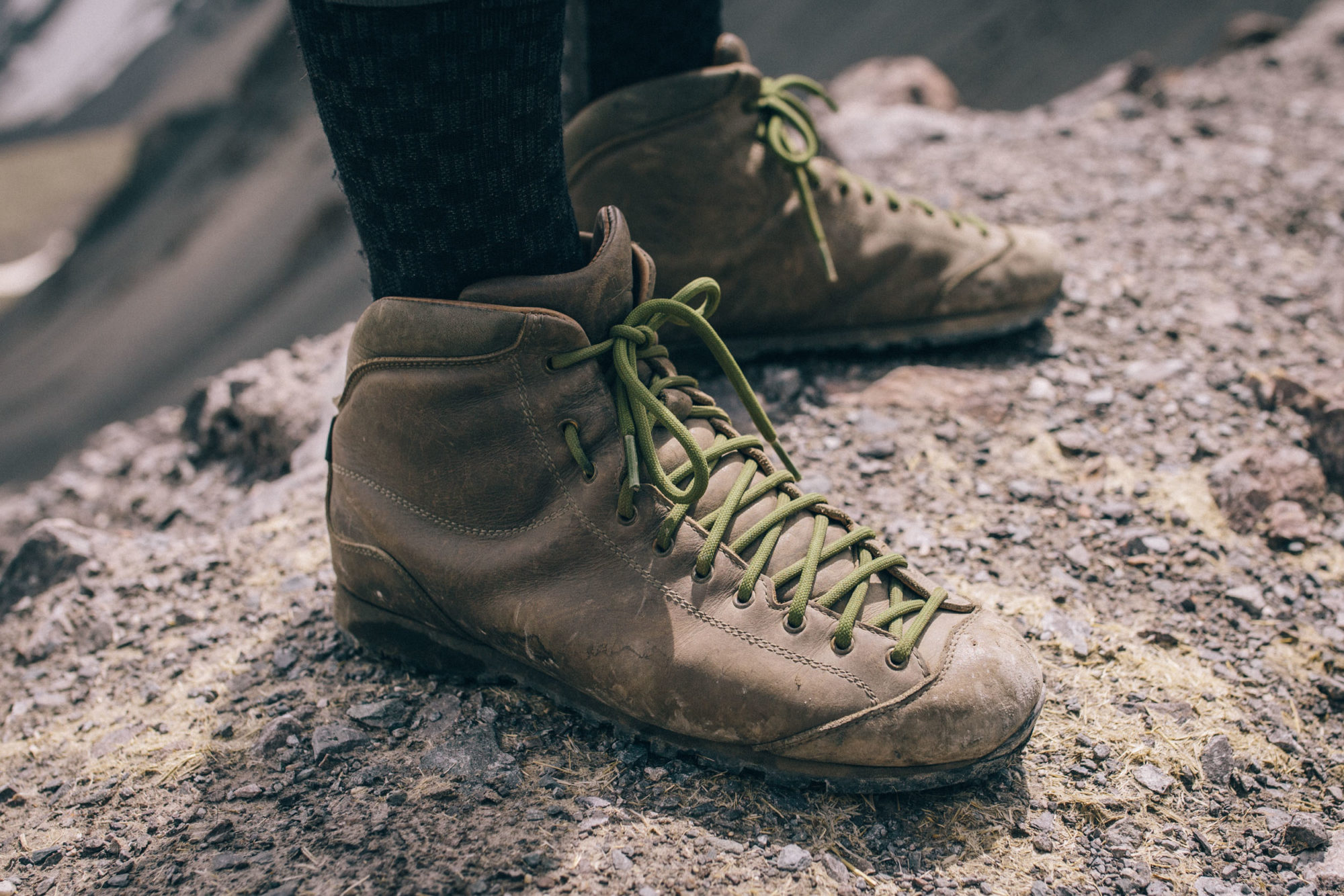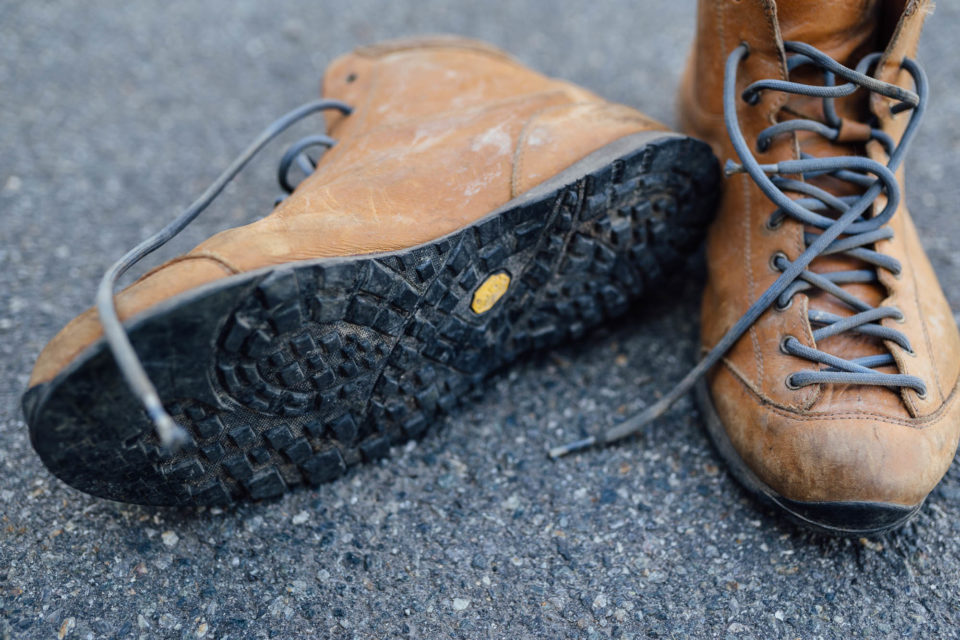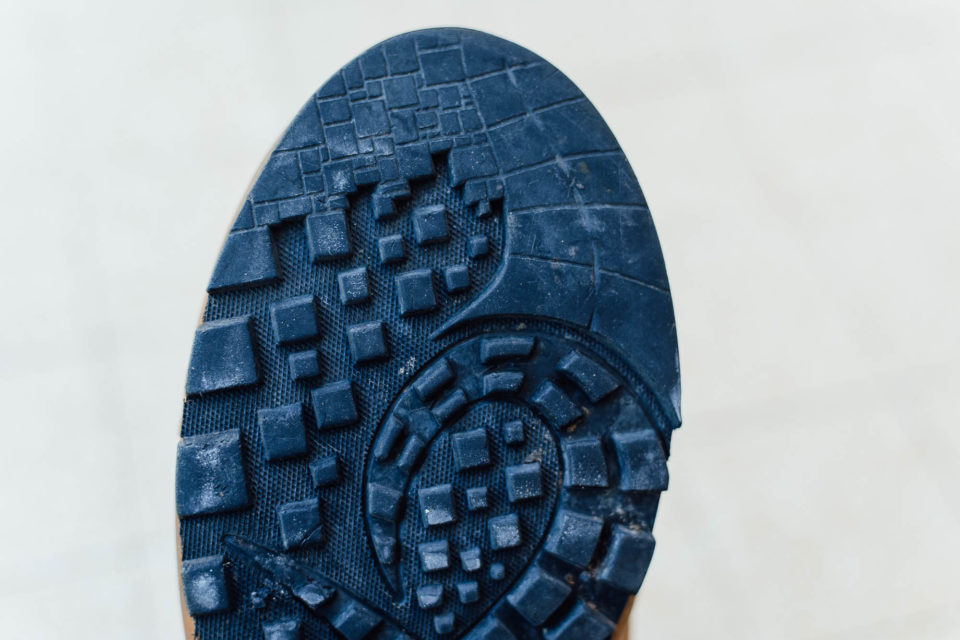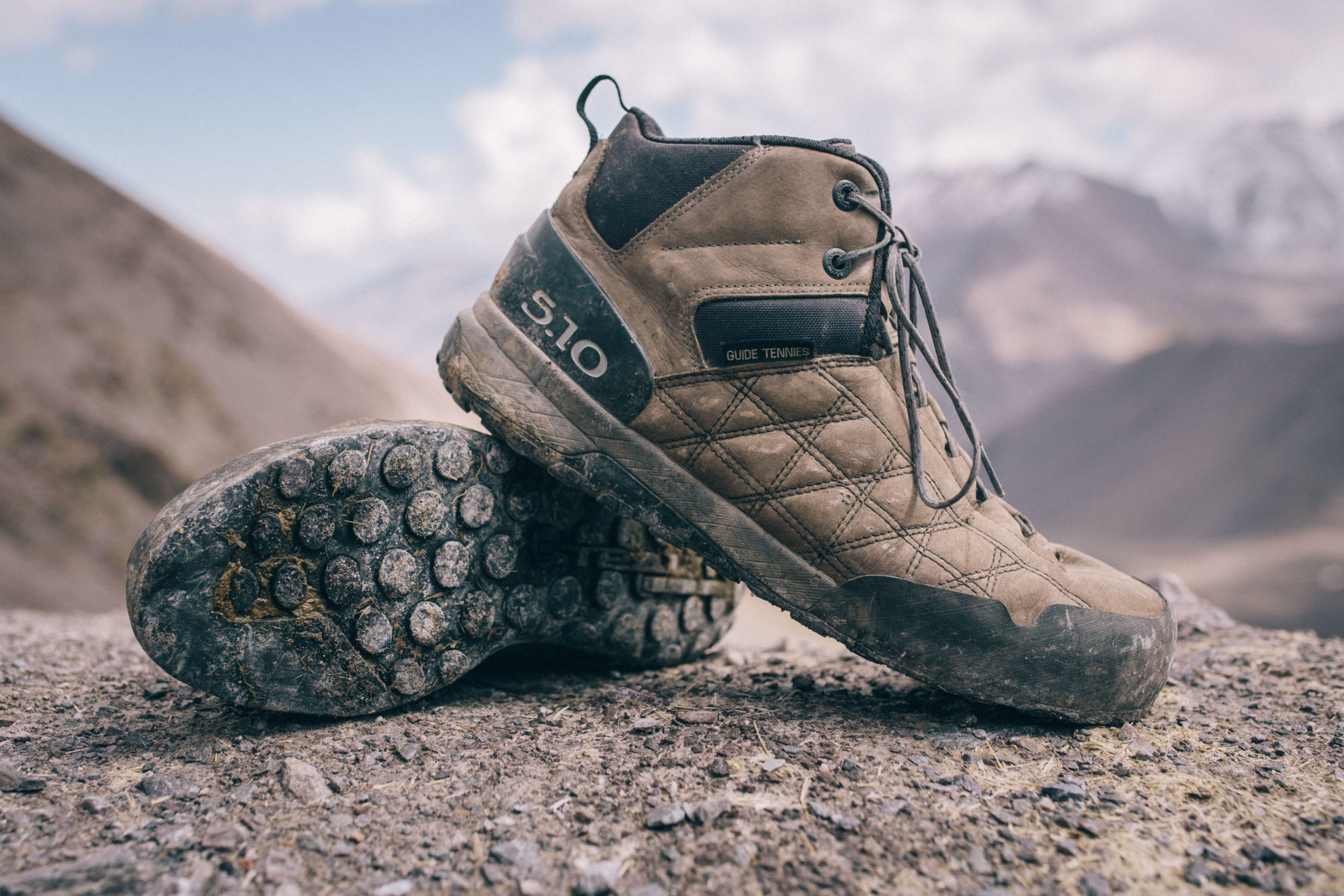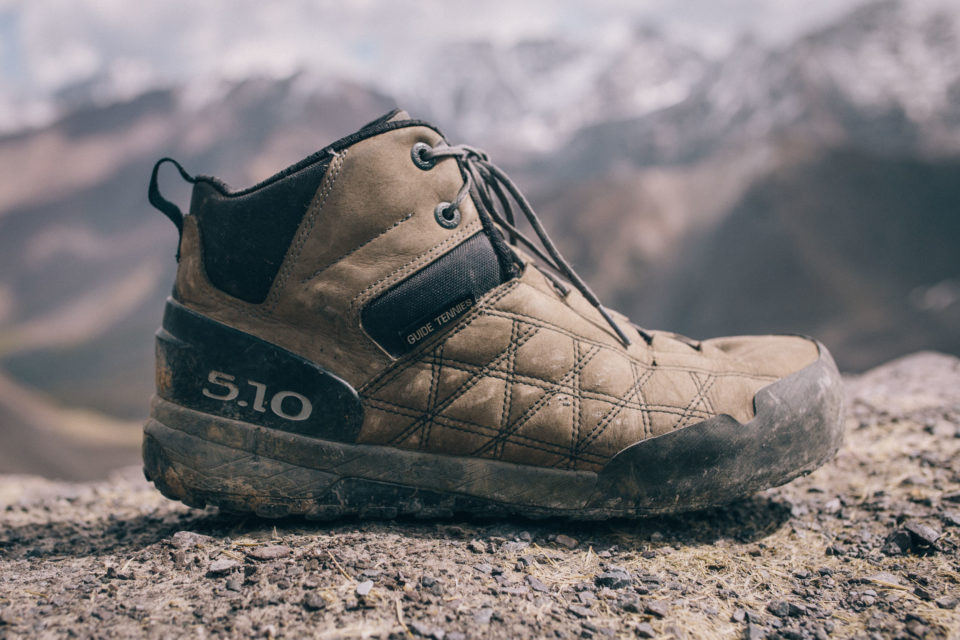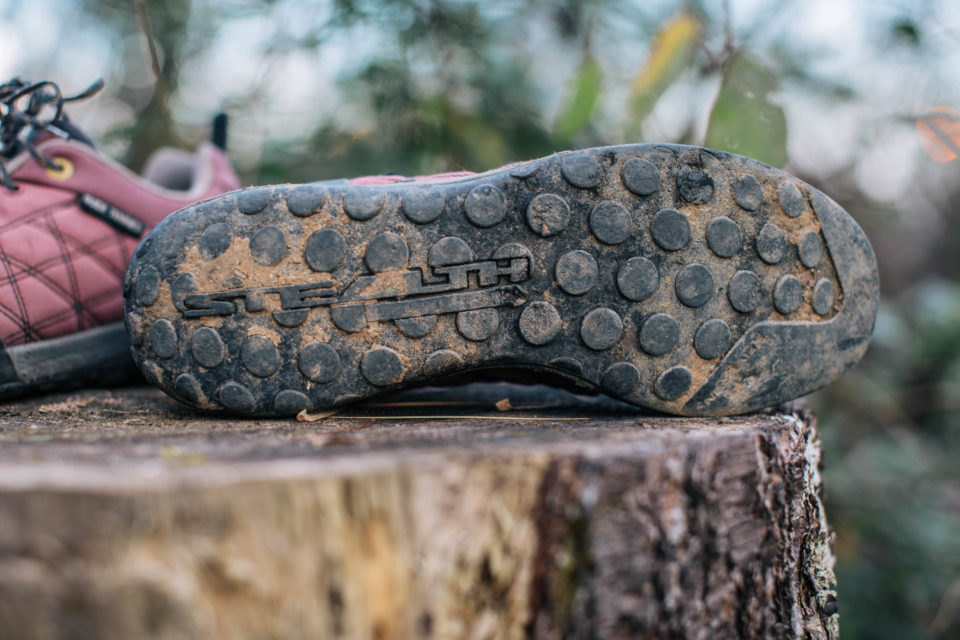
[ad_1]
Share This
0
Thanks in advance for spreading the word!
There seems to be a shortage of flat-pedal mountain bike shoes for cold weather—or mountain weather—and we’re always on the hunt for new options. Prone to cold feet, Logan has found several that work for him over the last few years, some of which might surprise you. Find the list here, plus a few tips for keeping your feet warm…
It seems like there aren’t many good options when it comes to flat pedal shoes for cold weather. I’m not talking about frigid temps such as the snowy environs best suited to burly fatbike boots. I’m talking about conditions that are on the edge of tolerable for non-winter people to get out and go trail riding or ATBing—temps hovering around 35-50°F—or the variable temperatures and weather that comes hand in hand with backcountry riding at higher elevations.
Ultralight cycling shoes are nice and all, but the issue I have is that my feet easily get cold. Whether that’s due to poor circulation or having long, skinny legs, I don’t know, but even in 50°F temps, my toes can go numb without proper footwear. So, when it’s under 55°F, I usually reach for some heavier shoes. Wearing a proper pair of rugged shoes is crucial in chilly conditions and mountain environments, as reinforced uppers, lugged tread, and padded ankle support all can act as insulation and help keep feet warm.
I actually had a touch of frostbite last winter from repeatedly riding in sub-freezing temps. Part of the problem is not being able to find proper footwear. There seem to be plenty of great cold-weather clipless shoes, but there just aren’t that many flat pedal options that fit the bill. I’m guessing some of you might recommend a few good hiking boots that could serve the purpose, but I have a couple of requirements that might change that: first, they can’t be overbuilt and chunky. And second, they have to have fairly sticky rubber soles suited for more punchy and technical trail riding. Fortunately, we’ve found a few that tick both of those boxes—and keep your feet relatively warm—and wanted to share our findings before things heat up in case anyone else is in the same boat. Here they are in a list ordered from the newest ones we’ve found to the oldest. Find mini-reviews and relevant links on each below.
Five Ten Impact Pro Mid
As you can see in this roundup, Five Ten (Adidas) offers more flat-pedal-specific footwear for riding in cold weather than most brands. But that still only adds up to a couple of options. And their ever-changing shoe catalog is always a little confusing. The newest option in their range—and the latest shoe I’ve tried—is this revamped Impact Pro Mid, a shoe described as “a mid-height mountain bike shoe for long hauls in all weather.”
The Impact Pro Mid features a lace closure with a nice little elastic lace-keeper, a stout supportive upper, a reinforced toe box, and their own “D30” padding in the ankles for extra protection. The Impact Pro Mid also gets a Stealth S1 Dotty tread outsole like the Freerider Pro I’ve been impressed with. On the trail, the Stealth S1 rubber offers best-in-class grip, as expected, and they feel pretty good just walking around, too. They also have a far better hiking tread for steep scrambles than the EPS. There are deeper lugs at the toe and heel that have a squared-off pattern for traction, which seems like a great improvement over the flat sole of the EPS. They also feel much stiffer, and I’m hoping they have the same level of durability as the sole of the Freerider Pro.
Five Ten makes no claims about insulation in these shoes, unlike the Freerider EPS (more on that below), which contains Primaloft. However, I think they may be warmer than the EPS. I’ve only had them in my possession for three weeks at this point, but I managed to wear them on a couple of rides in temperatures in the 40s. No sign of cold feet, whatsoever.
Part of their proficiency in colder weather may be the general bulk of the shoe. Weighing in at 561 grams, these things are burly. I was worried they were a little too chunky, but on the trail, they didn’t feel overly big or bulky. They’re certainly more noticeable than the 350 gram Freerider Pro, but I think they have a lot of potential as a backcountry mountain expedition bike shoe. If anyone else has longer-term experience with them, please drop us a line in the conversation section.
Fit: Like other Five Tens, there are some weird numbers to navigate. In short, they run large for US sizing; I usually wear a 9.5 and the 9 fits me in this shoe. However, they’re a 43.6 in EU sizing and I usually wear 42.5.
$180 / Made in China / 561 grams (per shoe, US 9 EU 43.6) / Details
Ion Scrub Select
There are already two write-ups about the Ion Scrub Select on this site: one in my seven-shoe roundup from last summer and one in our Editor’s Dozen favorites list from the end of the year. Suffice to say, it’s become one of my go-to flat pedal shoes, particularly on long rides in the shoulder season. I won’t go into a ton of detail since I already reviewed them in the roundup, but in summary, their Ortholite EcoPlush insole and medium-stiff shank make them extremely comfortable on long rides. They also have outstanding pedal grip and have proven to be very durable.
They’re also very well made with a double-stitched, four-piece construction, a rubber protective toe cap, and a fine-grain padded leather mid-top inner that offers additional padding and protection, particularly on the higher ankle side. They’re not waterproof, by any means, but they offer a little more insulation than most. That’s owed to the fact that their upper is made of real leather. I’ve ridden them in temperatures down in the low 40s (°F) and they do a surprisingly decent job when coupled with thick wool socks. I’d say their sweet spot is 50-60°F weather, however. They aren’t winter shoes.
Lastly, as I’ve mentioned before, that leather aesthetic doesn’t scream “cycling shoe”. Aside from the velcro lace-keeper strap, they’re fairly attractive and modest shoes that you can kick around in almost anywhere. Find the more detailed write-up over in the roundup.
Fit: Ion’s shoes run a little small; I usually wear a US 9.5, but their 10 fit perfectly.
$190 / Made in Vietnam / 473 grams (per shoe, US 10 EU 43) / Details
Five Ten Trailcross Mid Pro
First off, Five Ten’s Trailcross lineup is kind of like a microcosm of their entire bike shoe range—there are a lot of options among their several variations, a handful of which might be discontinued. Plus, all of them have confusing acronyms. There are four model lines in the Trailcross range now. They all feature a rather sportive look, Five Ten’s Stealth Phantom rubber sole, a neoprene cuff to keep the gunk out, and a semi-flexible shank that’s suitable for riding, hiking, and everything in between. They also use a lace-up closure with an elastic lace keeper. The Trailcross LT is the lightweight “warm climate” iteration, the Trailcross Mid Pro (shown here) is the burly “big mountain” shoe, and the XT is somewhere in between the two, which is “is designed with all countries and climates in mind.” They also have a GTX version now with a Gore-Tex lining for wet and cold weather.
Honestly, it’s hard to say whether Trailcross Mid Pro that we reviewed exists anymore. They’re nowhere to be found when you search on Adidas’ website, but there’s still a page that’s accessible when you link directly. I won’t go too in depth on its performance as you can read Cass’ full review here, but in summary, Cass said they might be his “favourite bikepacking shoes, simply because they’re so capable on the bike and comfortable off it.”
As for chilly weather performance, Cass still hasn’t really used Trailcross Mid Pro in frigid temps to test out its range, but when I asked, he mentioned that it starts getting a little warm in the upper 60s and thinks that the lower 40s might be its limit. I’m betting that the GTX version is very similar, but if anyone reading has any experience in cold temps with either model, let us know.
Fit: They run large for US sizing; I usually wear a 9.5 and the 9 was too big for me. The 43.3 in EU sizing seems more accurate as I usually wear 42.5.
$170 / Made in China / 444 grams (per shoe, US 9/EU 43.3) / Details
Five Ten Freerider Eps Mid
The Five Ten Freerider EPS Mid is a cold-weather take on Five Ten’s classic skate-style flat MTB shoe. Winterizing features include a heat-reflective footbed, a coated, weather-resistant leather upper with minimal seams, and PrimaLoft insulation strategically placed throughout the shoe.
Both Cass and I tested them to no end; the ones in the photos below are his and have traveled across Peru and Ecuador, shrugging off snow and rainfall in their way. Mine are just about as worse for wear after three seasons of regular-to-intermittent use. In short, the EPS Mid have been a great winter riding shoe, for the most part. I’ve ridden in them in near-freezing temperatures and they’ve kept my feet toasty, although I think the heat-reflective footbed falls a little flat. I’ve found them to be warmer with a composite pedal. Fortunately, they don’t seem to be overly hot when temps are in the 50s, so I’m more inclined to wear them when temps are in the 40s and 50s.
Like the classic Freerider, I find the Freerider EPS Mid to be a super comfy shoe, and one of my favorites for trail riding because of the fit—and illustrious pedal grip, of course. The softer, tackier Stealth S1 sole compound is the best in the business in that regard. However, there’s a significant difference between the sole on the Freerider and the one used in the Pro versions (Impact Pro and Freerider Pro). The Pro versions are far more durable, which I think is due in part to the stiffer compression-molded midsole. The Freerider and Freerider EPS tend to get a flimsy sole after a good bit of use. It’s like they’re tenderized after a season or so of riding and get very soft and flexible. After about three seasons of shoulder season and winter riding, mine are nearly kaput.
Fit: The US sizing is accurate (I wear a 9.5), but the EU sizing seems off as these are 43.3 and I usually wear a 42.5.
$150 / Made in China / 540 grams (per shoe, US 9.5 EU 43.3) / Details
PEdALED Mido Boots
I haven’t personally tried PEdALED’s Italian-made Mido boots, but not because I didn’t want to. I admired Joe’s in Kyrgyzstan and later got a pair for review. However, they were a half-size too large. Fortunately, Cass wears shoes a half size up from me, so I was able to send them to him for a full-on test.
I won’t go into any specifics, as you can read that in Cass’ write-up—complete with a second opinion from Joe. From the outset, there’s a lot to like about these boots, however. They have a low-profile sole that isn’t too bulky but is still effective on surfaces like the chunky scree that we encountered in Kyrgyzstan. They’re also incredibly handsome, with a climbing aesthetic and full-laced design. It’s also proven to be supremely durable, according to both testers, and performs well on the bike with decently sticky rubber and a simple tread pattern.
Lastly, the full-leather upper makes it capable in temps that mountains climates can dish out. When I asked Joe about the temperature range that the Mido could handle, he replied, “I don’t regard them as a real cold-weather option, but they’re surprisingly comfortable when it gets warm. So, for me, I’d say 45F+. Probably some people would find just the fact that they’re boots and leather kinda oppressive when it really gets up there, even though I don’t. So, 45-80F is a reasonable bet.”
Fit: The Mido has a narrow last and generally run large; I typically wear a 42.5 and the 43 was too big, even with thick socks.
$305 / Made in Italy / 428 grams (per shoe, EU 40) / Details
Five Ten Guide Tennies (Mid)
Five Ten Guide Tennies are something of a classic at this point. In my eyes, at least. I have one pair that has over 4,000 miles on them, and two more that I’m preserving for some hypothetical future trip, including the pair of Mid-tops shown here, which went on our trip in Kyrgyzstan back in 2016. Unfortunately, the Mids were discontinued. Even so, I wanted to include them here in hopes that Adidas will bring them back.
While the Guide Tennie is really an approach shoe, when paired with aggressive flat pedals, their dotty rubber sole has excellent grip that rivals some of Five Ten’s bike-specific shoes. Even though it’s a harder rubber compound, I think it’s just as good as many of the Freerider range with the right pedals. Adding to that, they’re unbelievably durable—the 4,000-mile review on one pair proved that—very comfortable, and perform pretty well off the bike.
The taller Mids shown here make for a little more of a burly riding boot, one that I thought was perfect for a ride on the Tian Shan Traverse. They’re also worth having in this list as I think they’re a little warmer than most bike shoes—and in hopes that Adidas/Five Ten will reintroduce them into their product catalog. We had temperatures that ranged from the 20s on up to 90+ on that trip, and while I can’t say I didn’t have numb toes at some point, they handled the cold pretty well and felt good in most other temperatures, too.
Fit: The fit was spot on with the Guide Tennies; US 9.5/EU 42.5 fit perfectly.
$160 / Made in China / 448 grams (per shoe, US 9.5 EU 42.5)
Tips for Keeping Your Feet Warm (and Dry)
Here are a few tips for keeping your feet warm that we’ve gathered from bikepacking in mountain conditions over the years. If you have others, please let us know in the conversation below.
Wool socks
For the same reasons we like it as an upper base layer—insulating properties even when wet, odor control, and wick dry properties—merino wool makes a great material for socks. Defeet Woolie Boolies are one of our favorites. Patagonia’s thick wool socks are nice too.
Silk liner socks
Thin silk sock liners are another great option. WinterSilks is unfortunately no longer in business, but there are comparable products available from other manufacturers. Look for options with a silk and wool fabric blend and a super-thin construction so it doesn’t add bulk.
Gore-tex socks
Although sometimes disputed, we’ve found Gore-tex socks to be invaluable. They can act as an insulating layer between your socks and wet shoes. If the depth of the river crossing is less than the height of your Gore-tex socks, charge through. When wearing your shoes, you can tip-toe over submerged rocks and not have to think about it or slow down. If the depth of the crossing is higher than the sock, one possibility is taking off all of your socks, putting your shoes back on, crossing, and then quickly putting on your (still dry) wool socks with the Gore-tex socks over them. This will keep them relatively dry from the wet shoes. We like this approach for rocky or rough river bottoms. As an alternative, plastic doggy-doo bags (or grocery plastic bags) can do the trick in a pinch. The model we have is no longer made, but Gore has some similar Shield Socks on offer for $50.
Tin foil Footbed Liner
Although we’ve never tried it, some folks recommend tracing your removable footbed on tinfoil, and adding that as a layer underneath it for added reflective heat insulation.
Toe and Shoe Covers
Obviously, there are a lot of toe and shoe covers out for clipless pedals, but we’re not aware of any for flat pedal shoes. If anyone has a recommendation, please feel free to share them.
Recommended Options
Unfortunately, this is a pretty short list with just six options—one of which is discontinued—so we published this in part to get recommendations from readers, as there must be other options out there. Perhaps they’re in the form of a good approach boot or just other bike options that we haven’t heard of. If you have a pair of cold-weather flat shoes you’d recommend, please let us know in the conversation below.
Related Content
Make sure to dig into these related articles for more info…
Please keep the conversation civil, constructive, and inclusive, or your comment will be removed.
[ad_2]

